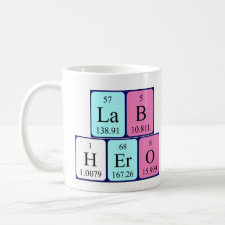
Authors: Zhang Y, Li YW, Hu YL, Li GK, Chen YQ
Article Title: Preparation of magnetic indole-3-acetic acid imprinted polymer beads with 4-vinylpyridine and β-cyclodextrin as binary monomer via microwave heating initiated polymerization and their application to trace analysis of auxins in plant tissues.
Publication date: 2010
Journal: Journal of Chromatography A
Volume: 1217
Issue: (47)
Page numbers: 7337-7344.
DOI: 10.1016/j.chroma.2010.09.059
Alternative URL: http://www.sciencedirect.com/science/article/B6TG8-514P5X9-1/2/a882e808f4f2bed32083e228bfae2163
Abstract: Auxin is a crucial phytohormone for precise control of growth and development of plants. Due to its low concentration in plant tissues which are rich in interfering substances, the accurate determination of auxins remains a challenge. In this paper, a new strategy for isolation and enrichment of auxins from plant tissues was obtained by the magnetic molecularly imprinted polymer (mag-MIP) beads, which were prepared by microwave heating initiated suspension polymerization using indole-3-acetic acid (IAA) as template. In order to obtain higher selective recognition cavities, an enhanced imprinting method based on binary functional monomers, 4-vinylpyridine (4-VP) and β-cyclodextrin (β-CD), was adopted for IAA imprinting. The morphological and magnetic characteristics of the mag-MIP beads were characterized by scanning electron microscopy, Fourier-transform infrared spectroscopy and vibrating sample magnetometry. A majority of resultant beads were within the size range of 80-150 μm. Porous surface morphology and good magnetic property were observed. Furthermore, the mag-MIP beads fabricated with 4-VP and β-CD as binary functional monomers exhibited improved recognition ability to IAA, as compared with the mag-MIP beads prepared with the individual monomer separately. Competitive rebinding experiment results revealed that the mag-MIP beads exhibited a higher specific recognition for the template than the non-imprinted polymer (mag-NIP) beads. An extraction method by mag-MIP beads coupled with high performance liquid chromatography (HPLC) was developed for determination of IAA and indole-3-butyric acid (IBA) in plant tissues. Linear ranges for IAA and IBA were in the range of 7.00-100.0 μg L-1 and 10.0-100.0 μg L-1, and the detection limits were 3.9 and 7.4 μg L-1, respectively. The analytical performance was also estimated by seedlings or immature embryos samples from three different plant tissues, pea, rice and wheat. Recoveries were in the range of 70.1-93.5%. The results show that the present imprinting method is a promising approach for preparation of selective adsorbents for sample preparation of auxin analysis in plant tissues
Template and target information: indole-3-acetic acid, IAA, indole-3-butyric acid, IBA, auxin
Author keywords: Auxin, Indole-3-acetic acid, Molecularly imprinted polymer beads, magnetic separation, β-cyclodextrin, Microwave heating



Join the Society for Molecular Imprinting

New items RSS feed
Sign-up for e-mail updates:
Choose between receiving an occasional newsletter or more frequent e-mail alerts.
Click here to go to the sign-up page.
Is your name elemental or peptidic? Enter your name and find out by clicking either of the buttons below!
Other products you may like:
 MIPdatabase
MIPdatabase









